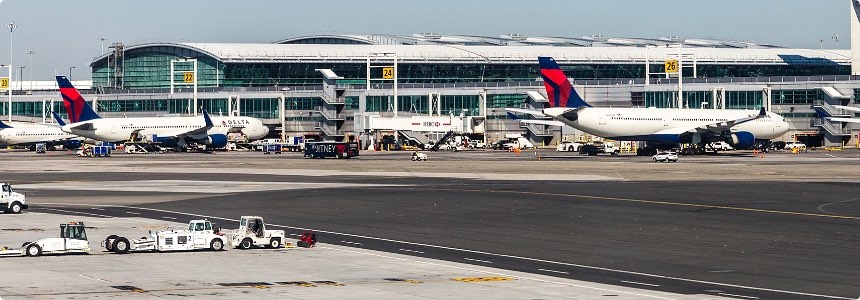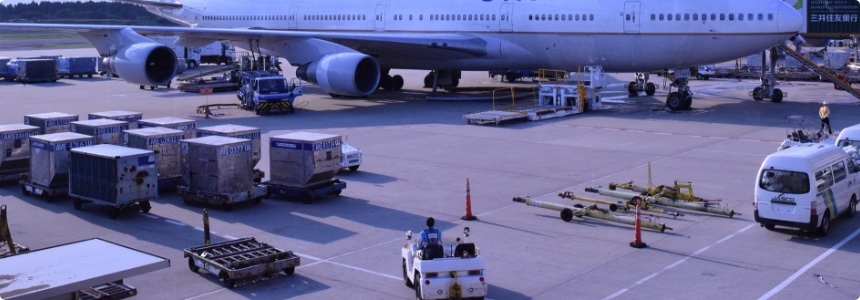If your operation is struggling to make ends meet with the rising fuel costs, there are some changes you can make to help stave them off – namely, transitioning to electric ground support equipment (GSE). Keep reading to learn how operations can reduce their dependency on fossil fuels and reduce the strain on their workforce with help from electric GSE.
The Rising Fuel Costs of the Aerospace Industry: Where Did It Come From?
According to the International Air Transport Association's (IATA) jet fuel price monitor, fuel prices have spiked 80% since 2021. The reasons for the rising cost of fuel are numerous, but ultimately it comes down to simple supply and demand. In 2020, there was an adequate supply of jet fuel for the aerospace industry, but the demand for it crashed with the pandemic.
With on-site work and regional, national and global demand for air travel back in full swing, there is once again a significant demand for fuel. However, now it's the supply that is falling short. Why is this? Well, the demand for crude oil has all but capped production. Not only were machines for oil production stopped, but the stringent rules regarding social distancing with oil workers on the job remained for months after the demand began to creep back upwards. Oil producers and refiners could not increase production output under the new regulations that only allowed half the workforce to be on-site at any given time.
In addition, we're undergoing what some call "The Great Resignation," a higher-than-average quit rate of employees across multiple fields and industries. Even as restrictions wane, critical positions remain unfilled as qualified individuals continue to leave in droves. In the technical field of oil drilling and refining, new employees' training and learning curves are long, slowing down the process even more. When you add these factors up, it's easy to see why the aerospace industry has taken a hit.
What Does the Future Of Fuel Costs Look Like?
Currently, the future is still open-ended. Air travel demand is still on the rise and will likely become even more prominent as countries continue to drop entry restrictions. Currently, the 2022 fuel consumption projection is still below 2005 use. However, the significant difference between now and 2005 is that the oil industry was then able to tailor the output for consumption – they weren't forced to rewrite the script of fuel production or fuel use. Instead, fuel was produced at the rate the aerospace industry consumed it.
While a few prominent companies are currently working toward sustainable transportation and aircraft power production, namely through sustainable aviation fuels like hydrogen, they are still quite a ways away from full-scale production.
Whatever the price, air freight and air travel demand are not going anywhere. The global air freight fleet is growing exponentially, with Boeing projecting freighter fleet growth by 80% through 2041. As a result, the rising fuel costs will be absorbed into the cost of goods and services.
With Air Travel Demand Back In Full Swing, Make the Transition to Electric GSE
Unfortunately, aerospace industry operations are forced to bear the brunt of these financial impacts. There has already been a shortage of technicians and pilots for several years, and the Great Resignation only worsens things.
Rising fuel costs are impacting the consumer's bottom line and aerial operations – especially those that do not have bottomless pockets or the power to receive massive government bailouts, like legacy carriers. Corporate and charter operations, as well as maintenance, repair and overhaul (MRO) facilities, are struggling more than ever. But how can anyone find any margin to fend off inflated fuel costs?
The answer is finding ways to use clean, renewable electrical power anywhere an operation can.
Save On the Cost of Fuel With Electric GSE
With yearly budgets stretched thin, the transition to electric ground support equipment might not seem like a high priority. But at some point, every operation needs to assess how its support infrastructure impacts its overall bottom line.
Conventional ground support equipment has proven its reliability over decades, but still has its limitations. Industrial diesel fuel engines haven't changed much, nor have the machines they power. Diesel and gas-powered GSE burns hundreds of gallons of fossil fuels per year, per unit. When ground crews must consistently idle diesel engines, it cuts even deeper into an operation's bottom line and wastes fuel.
Electric GSE is clean and more efficient for saving on fuel costs, relying on power already harvested from the sun and wind through solar and wind farms.
Electric GSE Can Help Navigate Manpower Constraints
Aircraft towing operations can be taxing on ground personnel even at the best of times because of the team size required to operate conventional aircraft tugs (usually five or six team members are required when towing in and out of hangars.) In this time of technician shortages, these tasks will take up to six ground personnel away from other pressing matters.
Electric GSE, like towbarless tugs, allows one or two individuals to do the work of an entire team. With better visibility, increased safety features, dynamic braking and more accessible connections, operators can perform towing and pushback operations without needing multiple towing supervisors to check for clearance throughout the move. This can save operations hundreds of manhours that would otherwise be spent committing to a simple but critical task. They can instead focus on inspection, overhauls and repairs.
Switch to Electric Ground Support Equipment With the Help of Eagle Tugs
At the time of writing this article, fuel costs have already begun to drop. But, who knows when they may drastically rise again? Within the scope of the aerospace industry, there are a lot of variables we can't always predict or control. However, you can control whether your operations will switch to electric ground support equipment to help save on fuel costs and manpower. At Eagle Tugs, we've utilized our 50+ years of industry-leading experience to create our top-rated line of electric GSE to help. Become a part of the change to sustainable transportation to combat the rising cost of fuel today. As fuel costs go down and you want to incorporate a few diesel tugs into your regular rotation, we can help with that too. Our selection of aircraft tugs features both electric and non-electric GSE. Browse our entire selection today.
Shop Aircraft TugsRelated Articles: Electric Ground Support Equipment
 Guide to Transitioning to Electric Ground Support Equipment for Towing Aircraft There is a global effort in place to shift aviation and ground support equipment (GSE) toward cleaner and greener airport transportation. While we've talked about the cost...
Guide to Transitioning to Electric Ground Support Equipment for Towing Aircraft There is a global effort in place to shift aviation and ground support equipment (GSE) toward cleaner and greener airport transportation. While we've talked about the cost... Types of Airplane Tugs, from Small Aircraft Tugs to Electric Towbarless Tractors An airplane tug is used to prepare an aircraft for take-off or transport a craft for regular maintenance and repair. It's a crucial component...
Types of Airplane Tugs, from Small Aircraft Tugs to Electric Towbarless Tractors An airplane tug is used to prepare an aircraft for take-off or transport a craft for regular maintenance and repair. It's a crucial component... Guide to Transitioning to How To Maximize Cost Savings and Make the Most of an Airport Ground Support Equipment Fleet Operating, maintaining and repairing an airport ground support equipment (GSE) fleet can be expensive. But by streamlining and maximizing the efficiency...
Guide to Transitioning to How To Maximize Cost Savings and Make the Most of an Airport Ground Support Equipment Fleet Operating, maintaining and repairing an airport ground support equipment (GSE) fleet can be expensive. But by streamlining and maximizing the efficiency...


